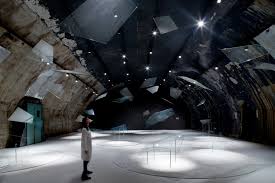
Art has always been about engaging the senses, but in recent years, artists have begun to experiment with blending sound and vision in ways that create entirely new experiences. Soundscapes—carefully composed layers of music, ambient noises, or recorded voices—are increasingly being used as a tool in visual art installations, turning a static piece into an immersive journey.
Imagine walking into a gallery where a painting of a forest is accompanied by the rustling of leaves, birdsong, and distant water flowing. The artwork suddenly comes alive, engaging not just the eyes but the ears, creating a deeper emotional connection. Many contemporary artists are using this approach to transform exhibitions into multi-sensory spaces, where soundscapes guide how we perceive and interpret what we see.
This merging of sound and vision isn’t limited to galleries. Public art projects are also embracing sound, with murals that integrate QR codes, allowing viewers to listen to audio stories or soundtracks connected to the artwork. Digital artists, too, are creating animated visuals paired with sound layers, blurring the line between music videos and art pieces.
The rise of technology has made this possible. Portable speakers, immersive audio systems, and even augmented reality apps allow artists to embed sound into their work without losing accessibility. For audiences, the experience is transformative—art becomes less about passive viewing and more about active engagement.
Soundscapes in art challenge us to rethink how creativity works. They remind us that music and visuals are not separate entities but complementary forces. When combined, they expand the boundaries of artistic expression, proving that art is not just something to see, but something to feel and hear as well.
